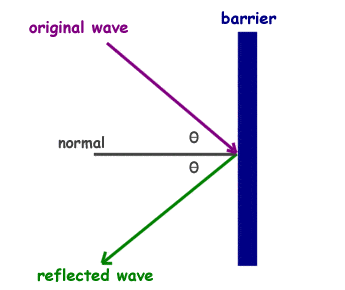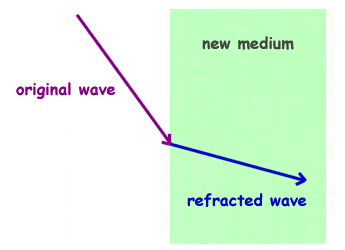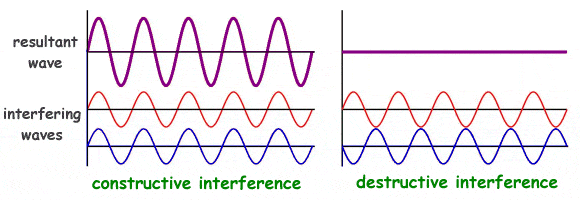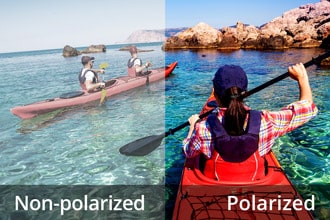In this blog post, we will look at the properties of electromagnetic waves. Then, we will look at the behavior of light waves, which are electromagnetic waves too.
From X-rays to radio waves to visible spectrum, electromagnetic waves are everywhere around us. Understanding their properties and behavior has helped humanity develop some incredible devices. Without these devices, our daily lives would be impossible.
In this blog post, we look at some of these useful devices as well as some natural phenomena. We will do our best to help you understand the basics behind them. First, we will look at some of the properties of electromagnetic waves.
Properties of electromagnetic waves
- Wavelength - The length of the wave,i.e., the distance between two consecutive maximum or minimum values of the wave.
- Frequency - The frequency is the number of waves (of one wavelength) that pass through a fixed point in unit time (one second).
- Amplitude - The maximum displacement of a particle from its original position.
- Phase - A particular point on the wave, designated as an angle between 0° and 360°. Phase difference is the displacement of one wave in comparison to another with the same frequency.
- Energy - The energy a wave carries is directly proportional to the square of its amplitude. The energy is also directly proportional to the frequency and inversely proportional to its wavelength.
- Intensity - Intensity is the amount of light at a particular wavelength.
- Color - The wavelength, at which the intensity of a wave is maximum, determines the color of the wave.
Behavior of light waves
When electromagnetic waves encounter a new medium or move through a medium, they may exhibit one of the following behaviors. But we won't look at these behaviors directly. Instead, we will look at some natural phenomena that occur in nature and man-made instruments. Then, we will try to understand the behavior of waves (mostly visible light) associated with that phenomenon.
How can submarines see what is going on outside water?
Clue: Due to reflection
Reflection
Reflection is the phenomenon due to which, a wave, that hits the interface between two mediums, returns to the same medium from where it hit the interface. In this phenomenon, the angle of incidence and the angle of reflection are always equal.
Example
When you look at a mirror and see your reflection, it is because the mirror reflects the light waves.

Practical application
A periscope uses the concept of reflection. Submarines use periscopes to see what is going on above the water while remaining submerged inside water.
How do a microscope and a telescope differ from a projector?
Hint: Due to Refraction
Refraction
Refraction is the phenomenon due to which, a wave, that hits the interface between two mediums, moves into the other medium with a change of direction, wavelength, and speed.
Example
A prism refracts the light wave into different colors. Similarly, water droplets in the atmosphere refract the visible light (coming from the sun) creating a rainbow.
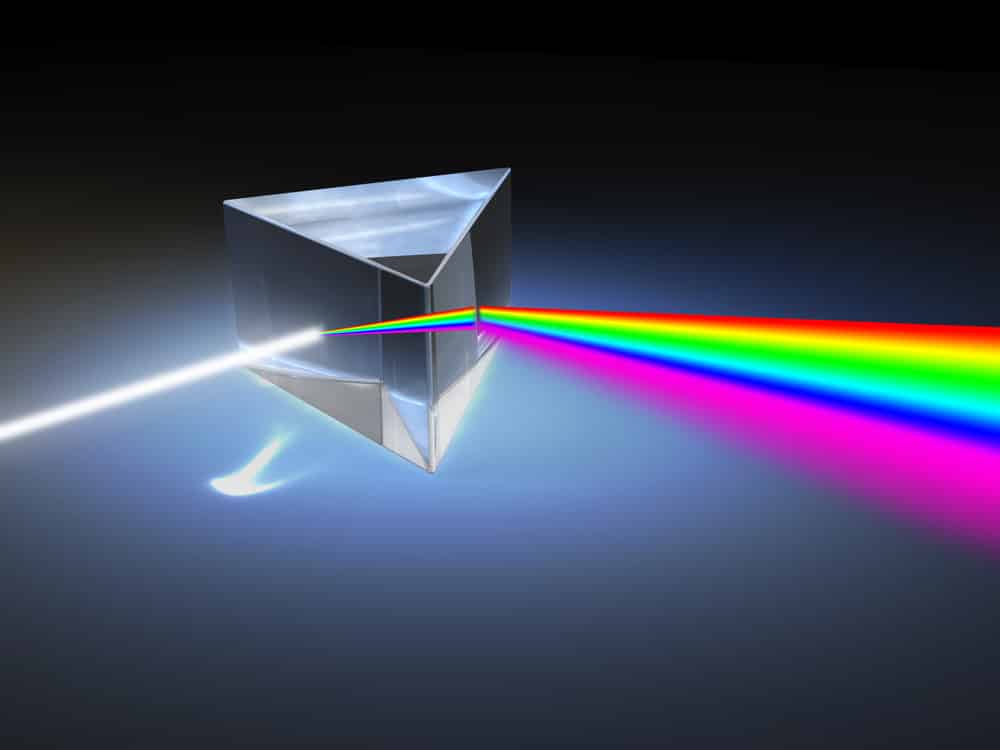
Optical prism refracting a ray of white light.
Practical application
Lenses work based on the principle of refraction. A lens refracts the light rays incident upon it. As a result, an image is produced on the other side of the lens, which is larger than the original object.
1. A convex lens causes the light rays that come from different parts of a distant object, to converge at a single point (your eye). Therefore, we use it to build objects like telescopes, binoculars, and microscopes.
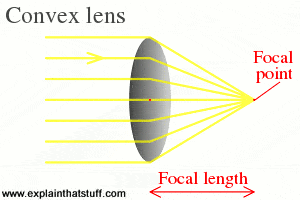
A convex lens refracting waves - Image credits
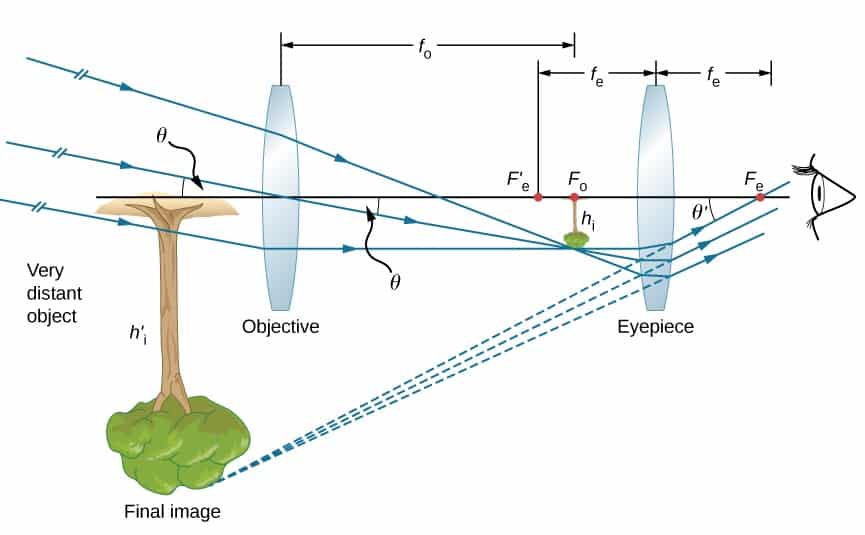
Image enlargement by a telescope - Image credits
2. A concave lens causes the light rays that come from different parts of a distant object, to diverge. Therefore, we use it in objects like projectors to create enlarged images.
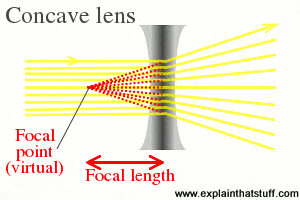
A concave lens refracting waves - Image credits
What makes a beam of light passing through a small hole produce multiple concentric circles on the other side?
Clue: Due to diffraction
Diffraction
When a wave hits an obstacle (or hole), it bends around the obstacle even though it stays in the same medium.
Example
When a red laser beam passes through a circular hole, the resulting wave looks as shown in the picture below.
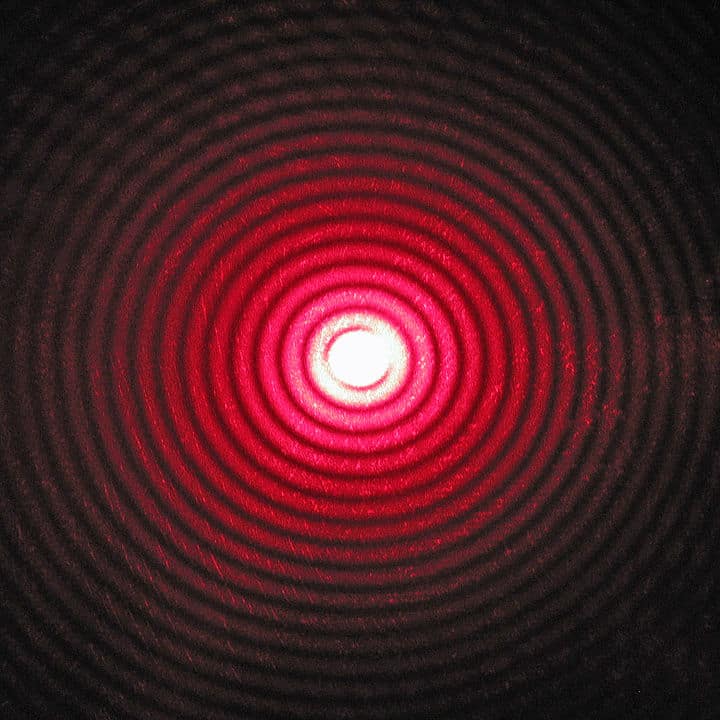
By Wisky - Own work, CC BY-SA 3.0, Link
Practical application
The principle of diffraction makes the construction of spectrometers possible. We use spectrometers to study the composition of stars as well as the composition of atoms and molecules.
When you talk to a person wearing glasses, why can you (sometimes) not see your reflection on it?
Clue: Due to interference
Interference
Interference is the phenomenon that happens when two waves come in contact with each other. Depending on the difference in their phases (time), the resulting wave might have a higher amplitude (constructive) or a lower amplitude (destructive). When a diffracted wave meets the original wave or another diffracted wave, it undergoes interference. Thus, Diffraction is often accompanied by interference.
Example
One typical example of interference is the multiple colors you see on a soap bubble.
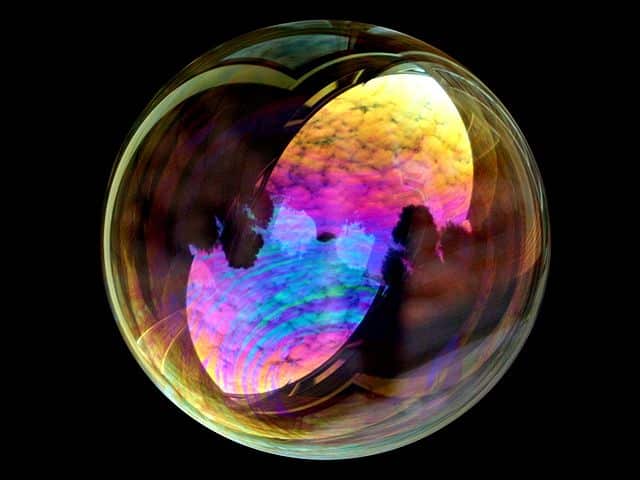
By Brocken Inaglory - Own work, CC BY-SA 3.0, Link
Some of the light waves that fall on the soap bubble get reflected by the upper layer (air-bubble interface). But some of the light waves are transmitted through the soap bubble. Then, a part of these light waves is reflected by the lower layer (bubble-air interface). These light waves reflected by two layers interfere with each other. Consequently, they cancel out some colors while brightening the others.
Application
Interference makes the creation anti-reflection coatings for lenses (used in sunglasses, telescopes, microscopes, solar panels, etc.) possible. By adjusting the thickness of the coating, some or all the wavelengths of light waves can be canceled out. This destructive interference prevents any reflection from happening. Anti-reflection coatings have two uses:
1. Improve appearance by reducing reflection - useful in designing glasses. If you wear a spectacles with an anti-reflection coating, your friend needn't look at his reflection while talking to you.
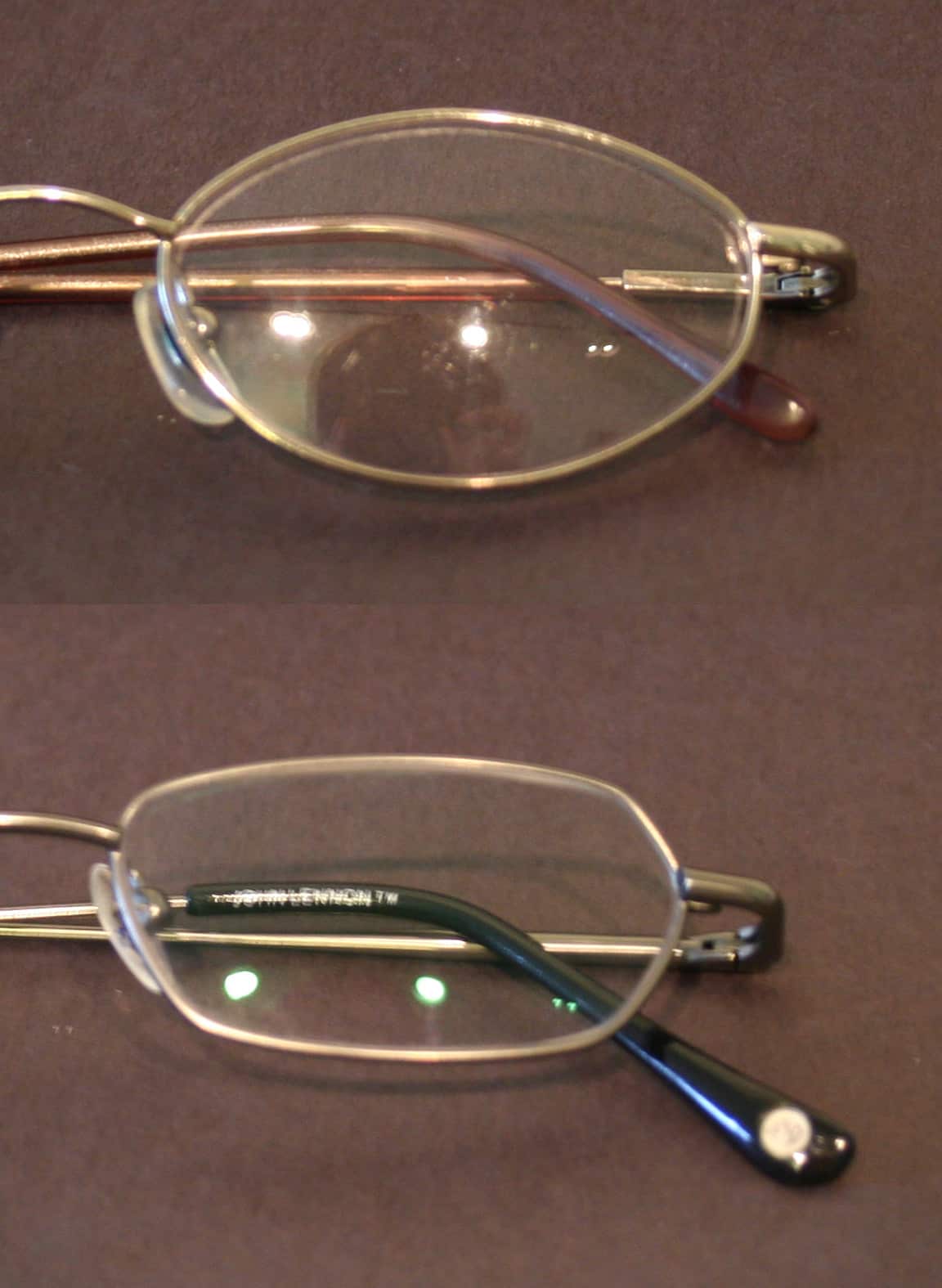
Without vs With Antireflection coating - Image license
2. Improve efficiency by reducing reflection and improving transmission - useful in solar panels. Solar panels are covered with glass that improves transmission. As a result, more solar light reaches the solar cells. Hence, more electricity is generated.
What causes the glare that you see on the highway and the surface of a water-body?
Clue: Due to polarization
Polarization
Polarization is a characteristic unique to transverse waves. In transverse waves, the direction of movement of particles is perpendicular to the direction of movement of the waves. If the direction of the motion of the waves is the X-axis, then these particles can move in any direction along the YZ plane.
In a linearly polarized wave, the particles oscillate only in a fixed direction (fixed angle along the YZ plane). On the other hand, in an unpolarized wave, they oscillate in all directions (along the YZ plane). However, most sources of electromagnetic waves produce only unpolarized waves, consisting of waves with different polarizations. Therefore, a polarization filter is used to get linearly polarized waves from unpolarized waves.
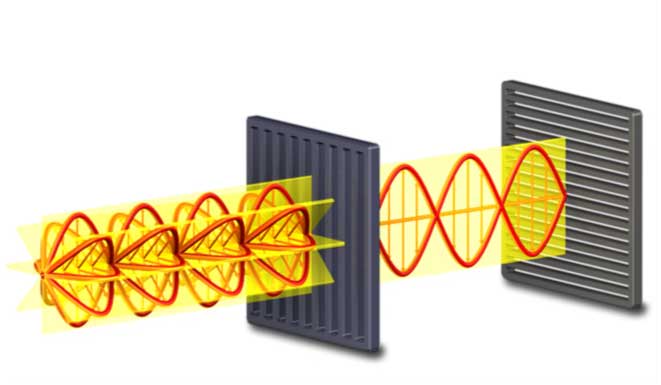
Vertical linear polarization of an unpolarized wave - Image credits
Example
The glare you see on the highway while driving, and on a water-body on a sunny day are due to polarization.
The light produced by the sun, as well as most artificial light sources, is unpolarized. But the water-body and the highway act as horizontal linear polarization filters naturally, reflecting only the light waves parallel (horizontal) to the surface. When this light enters our eyes, it creates a powerful glare. As a result, it becomes difficult to see clearly under the surface of the water and on a highway.
Application
Polarized Sunglasses act as vertical polarization filters. So, they block the harmful glare, which consists of light waves of horizontal polarization. Thus, a person wearing a polarized sunglass can see clearly under the surface of the water and also on a highway.
How to find out if your sunglasses are polarized?
While wearing your sunglass, slowly tilt your head while looking at a reflective surface. Your head must be perpendicular (at 90°) to your body. Now, if your sunglasses are polarized, the glare should brighten.
Why can you see through a glass door, but not a wooden door?
Clue: Due to absorption
Absorption & Attenuation
When waves pass through a medium (solid, liquid, or gas), they transfer their energy to the molecules in the medium (or the medium absorbs the energy), making the molecules vibrate. This phenomenon is called absorption.
As a result, as a wave moves through a medium, it steadily loses energy. Since the energy of a wave is proportional to the square of its amplitude, its amplitude falls as well. This steady loss of amplitude or energy of a wave as it travels through a medium is called attenuation.
Example
A medium is considered transparent (to that wave) if only a fraction of the wave's energy is lost as the wave travels through it. On the other hand, it is considered opaque if all the energy of the wave is lost.
A glass door is transparent to visible light since it absorbs only a part of the energy of the visible light. Hence, you can see through the glass door. However, a wooden door absorbs all the energy of the visible light. Therefore, it is opaque to visible light (but not to some other radiation).
Application
Different tissues in our body absorb X-rays to different extents. This concept forms the basis of the functioning of an X-ray machine.
We hope that this blog post helped you understand the properties of electromagnetic waves and the behavior of light waves. If you liked this blog post, you will like the following blog posts too:
